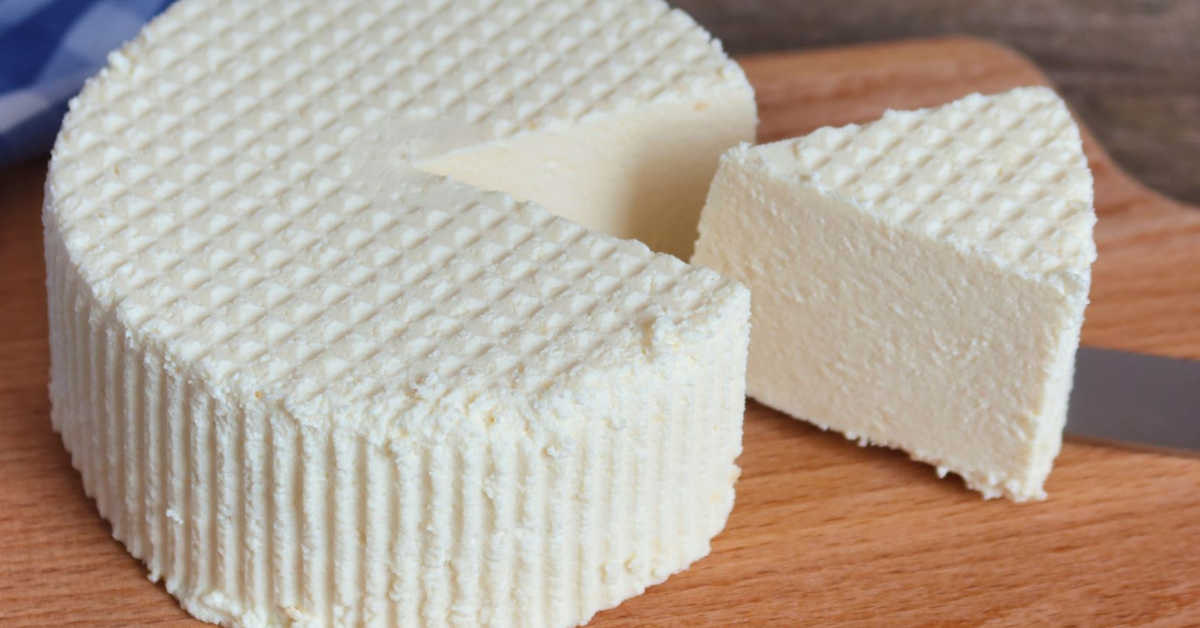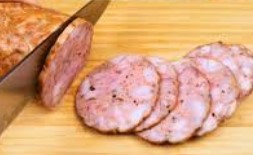Cheese is one of the oldest and maximum loved meals in human history. With its rich flavors, countless types, and ability to enhance nearly any dish, cheese has end up a staple across cultures and cuisines. at the same time as most people are used to picking up cheese on the grocery save, few recognise just how simple—and pleasant—it’s miles to make cheese at home. A primary cheese recipe doesn’t require specialized device, luxurious components, or superior abilities. All you want is milk, some pantry staples, and a chunk of staying power. The result? fresh, delicious cheese that tastes higher than something you could discover on a shelf.
selfmade cheese isn’t pretty much flavor—it’s approximately connection. It connects you to a time-honored tradition, one which dates lower back thousands of years and crosses each continent. Making cheese is a part technology, element artwork, and completely rewarding. whether or not you’re a home prepare dinner trying to expand your culinary abilties, or sincerely a person who wants to revel in fresh dairy without components or preservatives, mastering how to make cheese can open up an entire new global of taste and creativity.
This basic cheese recipe focuses on a clean, tender cheese—just like paneer, queso fresco, or farmer’s cheese. It’s brief to make, quite flexible, and ideal for novices. From pasta dishes to sandwiches, salads to desserts, this cheese may be crumbled, sliced, or melted into almost anything. Plus, due to the fact you manipulate the ingredients, it’s clearly free from artificial colorations, gums, or excess salt. once you experience the creamy texture and diffused, milky taste of selfmade cheese, you’ll apprehend why so many people fall in love with the procedure.
components and equipment You need to Get began
To make a easy selfmade cheese, you handiest need a few substances. The maximum important is milk—and the pleasant of your milk will substantially impact the taste and texture of your cheese. complete milk works high-quality, as it affords the fats content had to produce rich, creamy curds. you can use cow’s milk, goat’s milk, or even sheep’s milk, relying on availability and desire. simply make certain the milk isn’t ultra-pasteurized, as this process alters the protein structure and makes curdling difficult.
the following aspect is an acid, which helps the milk separate into curds and whey. common acids used for cheese-making include white vinegar, lemon juice, or citric acid powder. each acid creates a barely exceptional taste and texture—vinegar yields a easy, neutral taste, even as lemon juice adds a shiny, citrusy word. Salt is optionally available but recommended, as it seasons the cheese and facilitates maintain it barely.
You don’t need any fancy gadget, but some primary kitchen equipment are essential:
A massive, heavy-bottomed pot to heat the milk evenly
A slotted spoon or spatula for stirring and scooping
Cheesecloth or a smooth kitchen towel for straining
A great mesh sieve or colander
A meals-secure thermometer (elective, but helpful for precision)
in case you’re inquisitive about making less assailable cheeses in the future, you may finally invest in cheese molds, rennet, or bacterial cultures. but for now, this recipe will give you a scrumptious gentle cheese with components you have already got in your kitchen.
start by means of lightly heating the milk over medium warmness, stirring from time to time to prevent scorching. as soon as it reaches round 185°F (85°C), add your acid slowly, stirring lightly as you pour. You’ll see the milk start to curdle nearly without delay—white curds forming and separating from the pale yellow whey. permit it sit down off the heat for five to 10 mins to completely separate. Then, pour the combination through your cheesecloth-lined sieve to acquire the curds.
After draining for about 10 to half-hour, relying on your chosen texture, season the curds with salt if preferred. That’s it—you’ve made cheese. you may form it right into a block, disintegrate it over dishes, or devour it heat right away. store any leftovers in the refrigerator for up to 5 days.
The method and the technology in the back of homemade Cheese
Making cheese is set greater than simply following a recipe—it’s about information a method that’s been used for heaps of years to transform milk right into a preserved, flavorful meals. At its heart, cheese-making entails curdling milk, setting apart the strong curds from the liquid whey, after which shaping and getting old the ones curds into a desired shape.
The technology begins with milk’s composition. Milk contains proteins—commonly casein—and when you add an acid, the ones proteins coagulate, forming curds. warmness helps accelerate this reaction and improves the firmness of the curds. The acid you select additionally affects the very last taste: vinegar makes a smooth, neutral cheese; lemon juice adds a mild, fruity tang. Rennet, an enzyme used in many aged cheeses, is not wished for this sparkling cheese recipe but plays a comparable function in less attackable, elderly types.
once the curds form, the manner you treat them determines the feel of your cheese. For a softer cheese, drain the curds for a shorter time. For a more impregnable cheese, let the curds sit longer, or gently press them underneath a weight to eliminate extra whey. you could also rinse the curds in cold water if you want a milder flavor and less residual acid.
The whey that remains after draining is likewise beneficial—it’s full of protein and nutrients. you may use it in baking, smoothies, soups, or even to water flowers. not anything goes to waste in conventional cheese-making, and plenty of domestic chefs locate pleasure in the usage of each a part of the manner.
You’ll quickly be aware how a great deal more colourful your homemade cheese tastes as compared to save-sold alternatives. without preservatives or packaging materials, the flavors are sparkling, smooth, and pure. the texture is customizable, from creamy and spreadable to crumbly and dense. And the opportunities for seasoning and variation are endless. you can upload herbs like thyme or basil, spices like black pepper or paprika, or maybe sweet elements like honey and dried fruit.
the way to Use homemade Cheese to your Cooking
once you’ve made your personal cheese, the real fun starts—the usage of it to your cooking. This form of sparkling cheese is tremendously adaptable and works in each savory and sweet recipes. Its mild, milky taste makes it an ideal canvas for different substances, even as its smooth texture adds richness and stability to many dishes.
begin simple: spread your cheese on warm toast with a drizzle of olive oil and a pinch of salt. upload sliced tomatoes and sparkling herbs for a Mediterranean-inspired breakfast. Or crumble it into salads for a light, creamy evaluation to crisp veggies and vinaigrettes. It’s a fantastic alternative for feta or ricotta in most recipes, and pairs superbly with roasted greens, grains, or pasta.
For heartier food, use your cheese in savory bakes. Layer it into lasagna, mix it into crammed shells, or upload it to a quiche or savory tart. Stir it into risotto or polenta for additonal creaminess. Even a dollop on pinnacle of a bowl of soup can raise your dish, including frame and a comforting richness.
home made cheese is likewise a exceptional protein supply for vegetarian food. integrate it with sautéed vegetables in wraps or flatbreads, blend it with lentils for a hearty filling, or serve it along beans and grains in nourishing bowls. as it’s so sparkling and natural, it suits properly into a healthy life-style and offers essential nutrients like calcium and protein without excess components.
in case you lean closer to candy flavors, home made cheese may be transformed into dessert. blend it with a hint of honey and serve it with fruit, use it as a filling for crepes or pastries, or whip it right into a light cheesecake base. Its impartial flavor adapts beautifully to sugar, cinnamon, or citrus zest.
And don’t neglect the easy pride of ingesting it as-is, still heat from the pot, perhaps with a slice of crusty bread. selfmade cheese connects you for your food in a deeper way—it’s fulfilling not simply to taste, but to create.
Why each domestic cook dinner ought to try Making Cheese
In a global of convenience ingredients and equipped-made merchandise, taking the time to make cheese from scratch is a small but powerful gesture. It reminds us that suitable meals doesn’t need to be complex or luxurious—it just needs to be made with care. mastering the way to make your personal cheese teaches endurance, precision, and appreciation for the ingredients we often take for granted.
It’s also one of the maximum approachable kinds of home dairy-making. You don’t want fancy gadgets or tough-to-find ingredients. With nothing extra than milk, acid, and a touch information, you can make something actual, nourishing, and deeply fulfilling. It’s an ideal advent for those inquisitive about domestic cooking, self-sufficiency, or sustainable residing.
beyond the pride of consuming something you made your self, home made cheese opens the door to deeper creativity within the kitchen. it can inspire new dishes, educate you about meals technology, or even end up a fun family interest. youngsters can find out about transformation and staying power, while adults rediscover the pleasure of crafting something with the aid of hand.
There’s additionally a deep cultural richness in cheese-making. every location in the world has its own traditions, techniques, and testimonies tied to dairy and cheese. by using making it your self, you end up part of that lineage—maintaining alive a exercise that stretches lower back heaps of years.
selfmade cheese is scrumptious, lower priced, and flexible. It’s easy enough to make on a weeknight and unique enough to serve at a night meal. It’s a manner to bring satisfactory, culture, and a feel of feat into your kitchen. whether or not you’re a beginner cook or a pro chef, the manner of turning milk into cheese is one of the maximum profitable culinary stories you can have. And once you’ve tasted that first creamy bite, nonetheless warm and clean, you’ll marvel why you ever offered it in a store.




